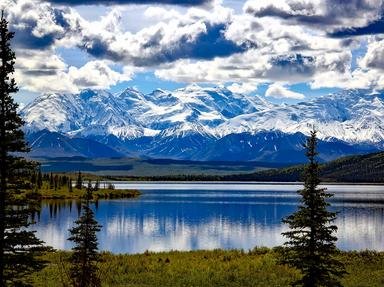Quiz Answer Key and Fun Facts
1. We sailed from Seattle in the blazing sunshine of a late July afternoon. After nearly two days at sea, we made our first landfall at Juneau, Alaska's capital city. Within which huge national forest, the largest in the US, is Juneau situated?
2. Juneau is known for having no road connections to the rest of North America. What is the reason for this state of affairs?
3. Walking through the magnificent Alaskan forests, we were treated to the sight of many beautiful wildflowers - including what tiny but lovely flower, Alaska's floral emblem?
4. The visit to Glacier Bay was one of the highlights of our cruise, in particular the time we spent admiring the stunning Margerie Glacier from various angles. What name is given to this type of glacier, which looks like a river of ice?
5. Later in the day we headed to Icy Strait Point, a small tourist port on Chichagof Island. This large island is part of what archipelago, named for a 19th-century monarch?
6. One of Alaska's greatest attractions is its rich wildlife, including bears. What bear species is particularly abundant on Chichagof Island?
7. Founded by Russian explorers in 1799 with the name of New Archangelsk, Sitka was capital of Russian America from 1808 to 1867. Which of these facts about Sitka is NOT true?
8. This beautiful totem carving can be admired in the visitor centre at Sitka National Historical Park. This and other equally stunning artifacts on display there were created by what indigenous people of southeast Alaska?
9. We reached Ketchikan early in the morning - our last stop in Alaska before heading south. Known as the Salmon Capital of the World, until the end of the 20th century it was home to what thriving industry, based on a plentiful local resource?
10. Another of Ketchikan's claims to fame is its collection of totem poles. The totem in the photo, an example of a shame pole, depicts which "foolish" 19th-century American politician, strongly associated with Alaska?
Source: Author
LadyNym
This quiz was reviewed by FunTrivia editor
agony before going online.
Any errors found in FunTrivia content are routinely corrected through our feedback system.
